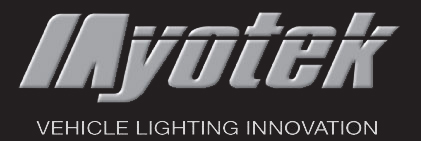January 22, 2017
Excerpt from Driving Vision News
 The 2017 North American International Auto Show got under way—for press and suppliers, at least—around the time of the DVN US Workshop. The Detroit auto show has skidded quite a ways downward from its heights in the 1950s and ’60s when it seemed everyone in the world wanted an American car (and that was the only type shown).
The 2017 North American International Auto Show got under way—for press and suppliers, at least—around the time of the DVN US Workshop. The Detroit auto show has skidded quite a ways downward from its heights in the 1950s and ’60s when it seemed everyone in the world wanted an American car (and that was the only type shown).
Despite heavy promotion of the show as roundly international and all-inclusive, makers who did not display at the show included Bentley, Lamborghini, Maserati, Land Rover, Jaguar, Porsche, MINI, Ferrari, Rolls-Royce, and America’s own Tesla. These makers, amongst others, increasingly see the Detroit show as simply not relevant in a current-day automotive world where the North American innovation hot spots are in Silicon Valley.
This year’s Detroit motorama brought few jawdropping out-and-out surprises; rather, it was a showcase of the general trend toward higher lighting content on most vehicles offered in the world’s second-largest vehicle market. One crucial piece of the context that separates the Detroit show from others round the world is that the US is one of the two countries on the North American regulatory island: the United States has its own lighting regulations, significantly different to the UN (or UN-approximate) regulations recognised by most of the rest of the world. So most vehicles on offer in America—and therefore most vehicles on display at the show—have different lighting system specifications and particulars than their equivalents elsewhere in the world.
Red rear turn signals (photo) are allowed in America, for example, and front and rear sidemarker lights and reflectors are required, but side turn signal repeaters and rear fog lamps and DRLs are not. And ADB is still not yet legal in America, so models that come equipped in Europe are stripped of that feature for the American market. And it’s not just lighting regulations that are different; most all North American vehicle regulations differ substantially from their international UN counterparts, as do North American vehicle buyers’ habits and preferences, so it’s really quite a different mix of vehicles than might be found at Paris or Frankfurt or Shanghai, for example.
Overall, last year’s news is also this year’s news: more and more and ever more lighting content on the front, sides, and rear of vehicles, but this is not a one-way trend. The Toyota Corolla, for example, which set our world on its ear in 2014 as the first high-volume, popular-price car to come with LED low beams as standard equipment, has had a refresh that includes new lighting. The front lighting package is higher-content; both low and high beam are now done in LED technology. But the rear lighting package is lower-content: the turn signals are now red rather than amber. LED daytime running lights, though not required, are present on a lot more vehicles. Some of them, such as the ones on new Cadillac models, are intricately sculpted and designed. The car-lights-as-art revolution, though it got its start in Europe, has well and truly spread to American shores. The whole industry,
worldwide, is striving at an unprecedented rate to add glitz and fascination to what used to be purely functional, minimally-styled equipment. There’s a taillamp with a specular-gravel reflector surface that sparkles and shimmers from any viewing angle (photo).
There are clever new instantiations of light guides and textured elements, an unprecedented amount of lighting technology in traditionally-stodgy segments (pickup trucks, e.g.), and it is surely safe to say the old philosophy of vehicle lights as commodity items is shrinking in the American rear-view mirror. Jeep’s Wrangler, long slow to change, is updated this year with LED headlamps from Canada-based Magna and LED fog lamps from American expert supplier Myotek. 
Another trend on the obvious increase is the use of lighting for brand and model-range identity advertisement. Lincoln’s fancy new Continental has LED headlamps with lens elements that present in the shape of Lincoln’s logo, for example (photo). Audi, Mercedes, and BMW models all have strongly familial lighting themes 619 Roofing. And even makers who choose not to lean quite so heavily on lighting for brand identification are putting more lighting content into their various models—Ford, for example, have expanded the use of their thick-optic LED headlamp technique first deployed on the F-150 pickup truck. Watch for comprehensive lighting-centred NAIAS coverage in the DVN Report to be published at the end of this month.
For more information about Myotek Industries, visit us at www.myotek.com or contact us at info@myotek.com
